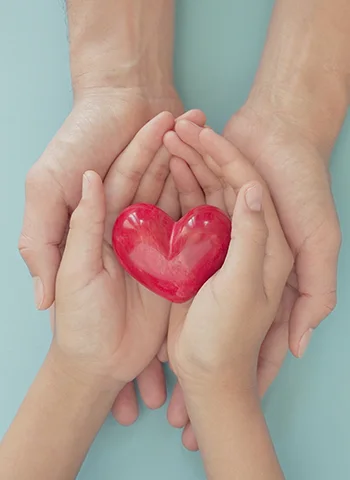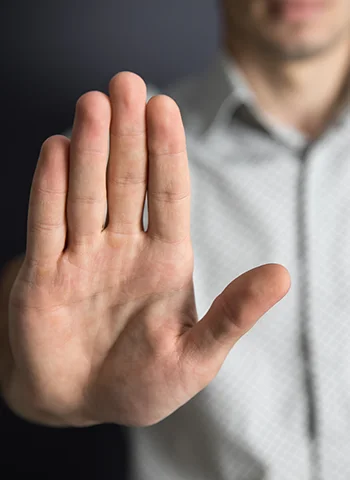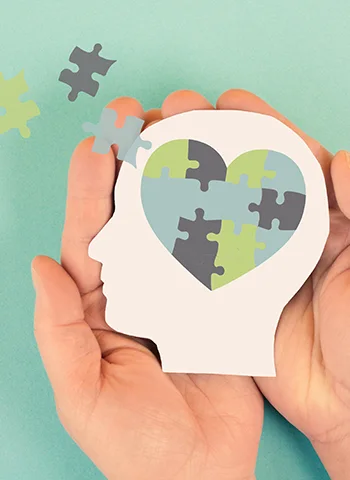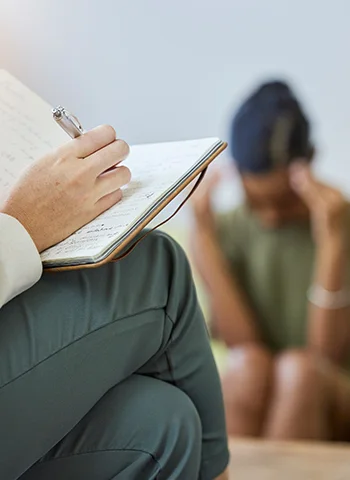Clonazepam Addiction Treatment
Clonazepam is commonly prescribed to treat certain health conditions, but prolonged or high-dose use can quickly become difficult to manage. What starts as a helpful treatment may gradually lead to dependence, impacting your health, relationships, and daily life.
The good news is that with the right treatment for benzodiazepine addiction, you can regain control and restore balance. From there, you can begin building a healthier, more stable future.

Take the First Step Towards Recovery
Steps Together offers personalised support and proven treatments, providing the care, guidance and encouragement you need to move forward with confidence and build a healthier future.

Understanding Clonazepam and Benzodiazepines
Clonazepam, known by the brand name Klonopin, is a prescription medication widely used to manage conditions such as anxiety disorders. Benzodiazepines, the drug class it belongs to, impact the brain in ways that help control anxiety and seizures, but pose important risks
As a prescription medication, clonazepam is usually given in tablet form and is taken by mouth. It is a controlled substance, meaning it is legal to use only when prescribed by a healthcare professional.
How Clonazepam Addiction Develops
A clonazepam addiction can develop slowly, often starting with a legitimate need to treat anxiety, seizures, or insomnia. Over time, you may become dependent on the drug and need to keep taking it to feel normal. Some people may start taking the medication more frequently or in larger amounts than prescribed.
Stopping the drug can lead to withdrawal symptoms like anxiety, tremors, or insomnia, which can make it tempting to start taking it again. Psychological dependence can also occur, and you may begin relying on clonazepam to cope with stress or day-to-day life.


Risks Associated with Benzodiazepines
While clonazepam and other benzodiazepines are effective, they have notable risks. You may quickly develop tolerance, meaning you need higher doses to get the same benefit, which can lead to clonazepam abuse and addiction.
Long-term use or misuse can cause problems such as drowsiness, memory loss, difficulty concentrating, and poor coordination. Over time, stopping these medicines can cause uncomfortable withdrawal symptoms. Some people also misuse benzodiazepines for their calming effects, which increases the risk of addiction.
Clonazepam Addiction Treatment
Treating clonazepam addiction usually involves a mix of therapies and support programmes. You may need both medical treatments and different kinds of behavioural support to help you stop using clonazepam and stay in recovery. A clonazepam addiction treatment programme may include:
Behavioural Therapies
Behavioural therapies are widely used in clonazepam addiction treatment. Cognitive-behavioural therapy (CBT) helps you understand your thoughts and actions linked to drug use. CBT gives you tools to manage triggers and avoid relapse.
Other therapies, like motivational interviewing, focus on increasing your motivation to change. These methods help you set clear goals for recovery. Behavioural therapies are often combined with other treatments for a more personalised care plan. For those struggling with benzodiazepine addiction.
Inpatient and Outpatient Rehab
Inpatient clonazepam rehab means staying at a clinic or centre while you recover. This setting gives you round-the-clock medical supervision and a structured routine. Detox is often the first step, and trained staff help you manage withdrawal safely. Inpatient rehab is recommended for severe benzodiazepine addiction or when you need a stable, substance-free environment.
Outpatient rehab lets you live at home and attend treatment sessions during the day. Outpatient programmes are usually best if you have a strong support network and your addiction is less severe. You can continue with work or family duties while getting help.
Individual and Group Therapy
Individual therapy gives you a safe place to explore the root causes of your clonazepam use. Sessions with a therapist help you identify triggers and develop coping strategies. You can talk openly about your worries and set personal goals for recovery.
Group therapy offers a chance to connect with others facing similar problems. In a group setting, you can share experiences, trade advice, and offer support to each other. This sense of community often helps people feel less isolated during recovery.
Aftercare and Continued Support
Aftercare is essential for relapse prevention once your main treatment finishes. Programmes may include ongoing counselling sessions, regular check-ins, and relapse prevention planning.
Ongoing support helps you recognise warning signs and respond before a relapse happens. Therapists can help you build a healthy routine and manage stress. Some centres also offer holistic therapies, such as mindfulness or yoga, to support your mental wellbeing and recovery from an addiction to clonazepam.
Other drug addiction treatment services we offer
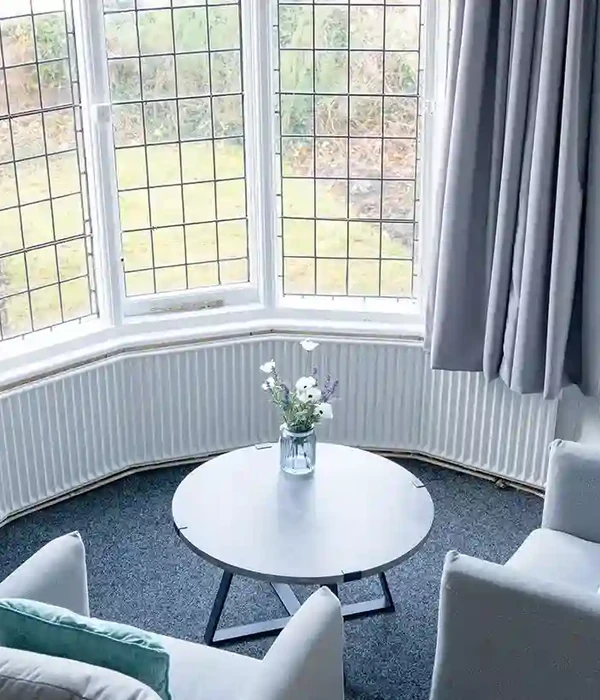
Co-Occurring Disorders and Special Considerations
When recovering from clonazepam addiction, it is important to address any mental health conditions and other substance use at the same time. This can help lower your risk of relapse and avoid harmful drug interactions. You may be dealing with conditions like anxiety, depression, or post-traumatic stress disorder, alongside clonazepam addiction.
This is known as having a co-occurring disorder or dual diagnosis. Treating both issues together is vital for your recovery. If your mental health is not managed, it can lead to misuse of clonazepam or other substances as a means of self-medication. This can worsen both your symptoms and addiction.
Polydrug Use and Interactions
Clonazepam addiction often occurs alongside the use of other substances like alcohol or opioids, a pattern known as polydrug use. This combination greatly increases the risk of dangerous side effects, such as slowed breathing, lowered heart rate, and life-threatening overdose. Alcohol and opioids are central nervous system depressants, and when taken with clonazepam, their effects can be intense and unpredictable.
Even after stopping using Klonopin, cravings for other substances may continue, making relapse more likely. Effective treatment must address all types of substance use together. Comprehensive care that includes medical supervision, therapy, and ongoing support is essential to ensure long-term safety and successful recovery.

Clonazepam Withdrawal and Detoxification
Clonazepam withdrawal usually begins within a few days after you last take clonazepam. Symptoms can vary based on how long you have been taking the medication and how high your dose was. Common withdrawal symptoms include anxiety, irritability, and panic attacks. You may also feel muscle aches, sweating, tremors, and headaches.
Medical detox aims to help your body safely remove clonazepam while reducing uncomfortable or dangerous withdrawal effects. Doctors will create a tapering plan, slowly lowering your dose rather than stopping abruptly. Detox can last from 2 to 4 weeks, but if you’re taking higher doses or using other substances, a longer stay may be needed.
One of the biggest dangers of clonazepam withdrawal is the risk of seizures. Seizures can happen if you stop taking the drug suddenly, or if your withdrawal is not managed by a professional. Doctors lower this risk by tapering your dose slowly and monitoring you closely during detox.
Characteristics of Klonopin Addiction
Clonazepam addiction can lead to serious changes in your physical health, mental wellbeing, and daily behaviour. Recognising these warning signs early makes a real difference in getting support and preventing long-term harm.
Physical and Psychological Dependence
When you misuse or abuse clonazepam, your body can quickly develop a physical dependence. Over time, you may notice the need to take higher doses to feel the same effects. This is known as tolerance.
Psychologically, many people experience strong cravings and find it difficult to stop the use of clonazepam, even if they want to. Anxiety, depression, and feelings of panic may worsen, especially if you try to reduce or stop your dose. You might also notice memory problems or confusion.
Health Effects and Complications of Klonopin Use
Klonopin use increases your risk of serious side effects and medical complications. Common side effects include drowsiness, dizziness, and loss of coordination, which can lead to accidents like falls or injuries. You may also notice blurred vision, slurred speech, or trouble thinking clearly.
Long-term misuse can cause depression, cognitive impairment, and even fatal overdose, especially if clonazepam is mixed with alcohol or other drugs. Some people experience worsening anxiety or panic disorders when they stop taking it suddenly.
Behavioural Signs of Clonazepam Addiction
Clonazepam addiction often leads to clear changes in your behaviour. You may begin exhibiting signs of clonazepam addiction, such as taking the medication outside of how it is prescribed, such as taking extra doses or using it for reasons other than medical needs.
Abuse of clonazepam or Klonopin can also look like frequent mood swings or being unable to control how much you take. This pattern of clonazepam misuse can be dangerous and signals a need for help.
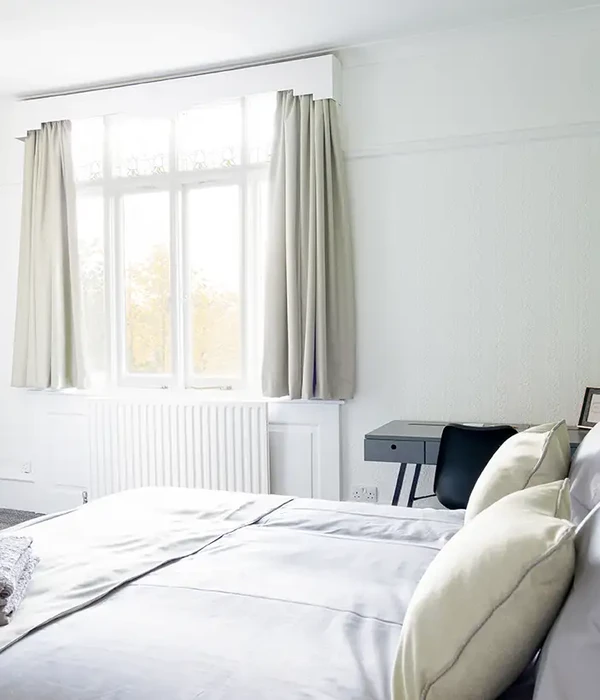
If You're Addicted to Clonazepam, You Can Recover
Like many benzodiazepines, clonazepam is meant to help with medical conditions, but it can lead to dependence or addiction. It can become a problem that requires a solution. Fortunately, there are solutions available.
At Steps Together, we offer comprehensive clonazepam addiction treatment and drug rehab services that can help you heal from addiction and its effects. Your life doesn’t have to revolve around drugs, and we’ll help you make sure that it doesn’t.
Frequently Asked Questions
What are the common signs of dependency on benzodiazepines?
You may notice increasing anxiety, irritability, or mood swings if you are dependent. Other common signs include trouble sleeping, physical symptoms like sweating or shaking, and needing higher doses for the same effect.
What are the potential risks of withdrawing from benzodiazepines without medical supervision?
Quitting benzodiazepines suddenly can cause extreme anxiety, shaking, sweating, and, in serious cases, seizures. These withdrawal symptoms can be dangerous and even life-threatening if not managed properly.
What therapies are considered most effective for treating benzodiazepine addiction?
A mix of cognitive behavioural therapy, group therapy, and one-to-one counselling is often effective. These approaches can help you build coping skills and change your patterns of thinking about drug use.
How does one begin the process of getting help for benzodiazepine abuse?
The first step is to speak to a doctor or addiction specialist. They can assess your needs and recommend the best treatment options tailored to you. Support may involve medical detox and therapy in a professional setting.
Can long-term use of benzodiazepines lead to addiction, and how is it treated?
Long-term use of benzodiazepines can lead to physical and psychological addiction. Your body and brain start to rely on the medication to function normally. Treatment usually includes gradual dose reduction, medical monitoring, and specialised therapies to address cravings and triggers.
What support systems are available for individuals recovering from benzodiazepine addiction?
Support can include outpatient services, group support meetings, family counselling, and ongoing therapy. Staying connected with others who understand your experience can make a significant difference in your recovery.
